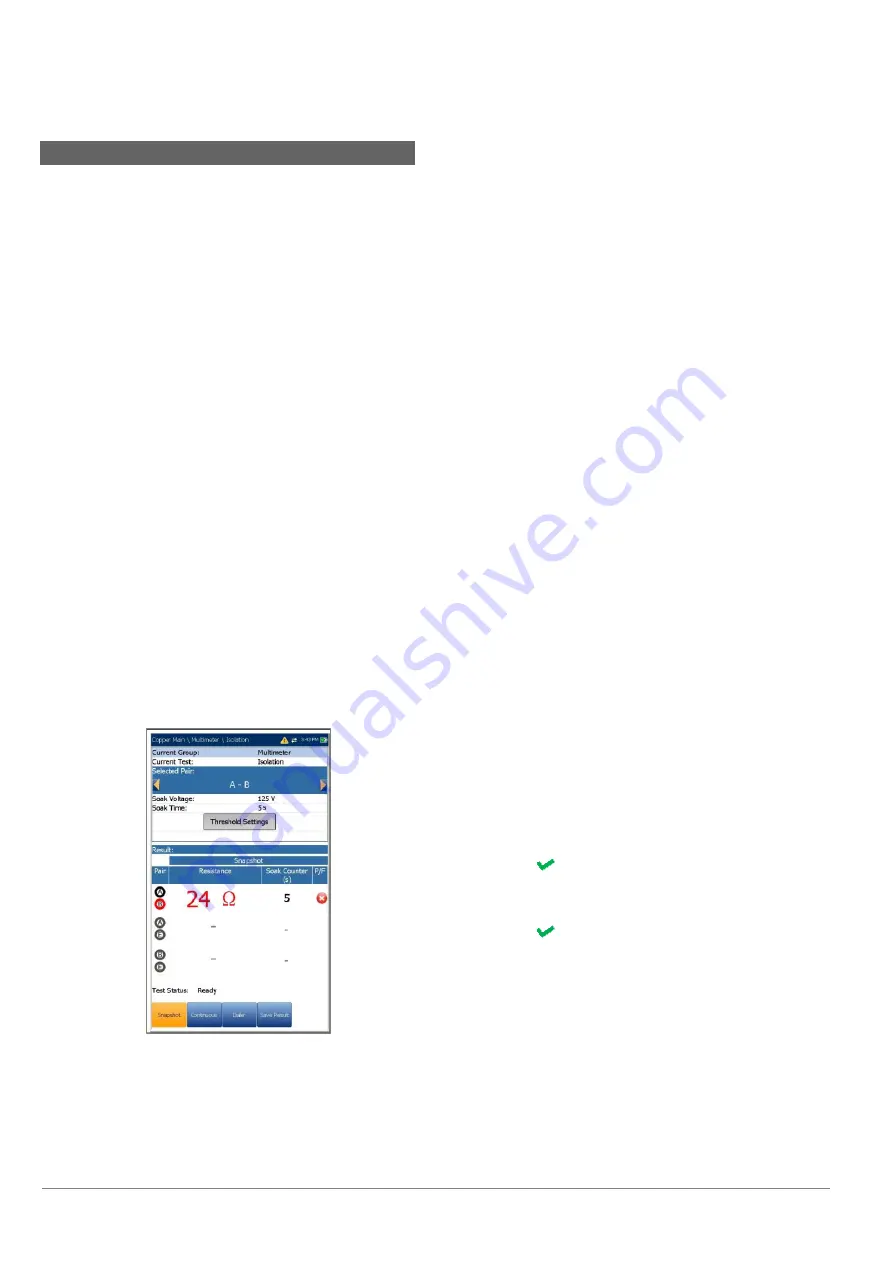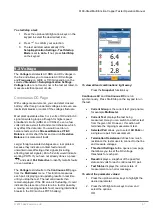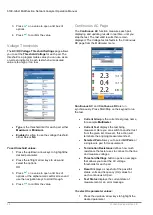
6100-Gfast Multifunction Network Analyzer Operation Manual
66
© 2020 Radiodetection Ltd
9.6 Isolation
The
Isolation
test, also known as a leakage test, is a
type of resistance test run over a period of time to look
for high-resistive faults. This test applies more
measuring voltage than standard resistance tests
(typically 100 VDC) over a longer period of time or
Soak Time
.
The purpose is to allow the applied higher voltage to
leak
through corrosion or high resistive faults, revealing
the fault by the drop in the measured resistance value.
Standard resistance tests use lower voltages (15 to 45
V) only for a short period of time.
Snapshot
The
Isolation
(also known as insulation resistance) test
shows how the pair insulation (that is PIC or paper,
pulp, etc.) may be lower because of long-term voltage
on the pair under test. (Remember that telecom signals
are full time.) This is especially important for power
span pairs carrying significant voltages over time. Be
aware that the continuous application of a voltage
tends to dry up moisture, and some faults may seem to
disappear. (You would see the resistance value
increase and thus improve as the test progresses;
however, the cause of the moisture is not resolved.)
Note: The test should be run with an open circuit at the
far end.
The
Snapshot
page shows measured isolation
resistance values for each lead combination. The
parameters are as follows:
Current Group
is the current test group name,
for example
Multimeter
.
Current Test
displays the test being
measured. Here you can switch to another test
from the given list. However, this action will
terminate the ongoing measurement test.
Selected Pair
allows you to select
All Pairs
or
a single wire pair for measurement.
Soak Voltage
allows you to apply a voltage
value to the pair(s) currently under test. If your
unit has the HIVOLT (high voltage) software
option configured, the
Soak Voltage
parameter
values are extended up to 500 V max.
Note: Since
Soak Voltage
is inherited in other tests
that use the Isolation test, the HIVOLT software
option also applies to the following tests:
Pair
Detective
and
User Auto Test
.
Soak Time
sets a soak period of time from 1 to
60 seconds.
Threshold Settings
button opens a new page
that allows you to set isolation thresholds for
each pair.
Result
displays a snapshot of the pass/fail
status,
Resistance
and a
Soak Counter
for
each selected wire pair. When running the test,
the counter counts to the selected Soak Time
by the second, for the wire pair(s) under test.
Test Status
displays the current state of
measurement or an error message.
To select the parameter values:
1. Press the up/down arrow keys to highlight the
desired parameter.
2. Press the left/right arrow keys to view and
select the options.
OR
3. Press
on a value to open a list box of
options or the alphanumeric editor screen and
use the navigation keys to scroll through.
4. Press
to confirm the value.
Isolation Thresholds
The
Isolation Threshold Settings
page allows you to
set the Resistance threshold values for each pair. The
threshold is a programmable value you can use as an
on-screen indicator in each test when a measured
value is too high or too low.






























